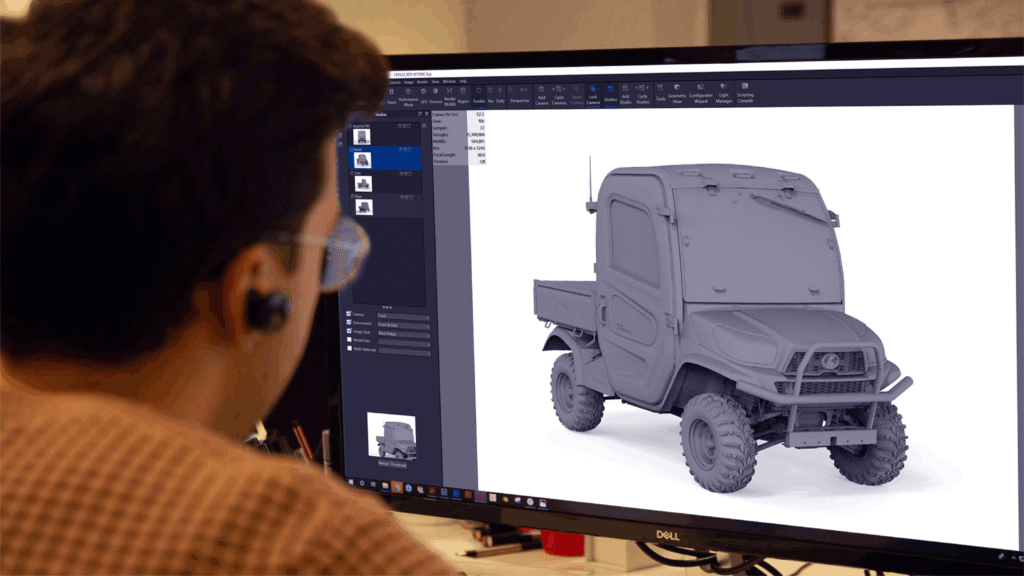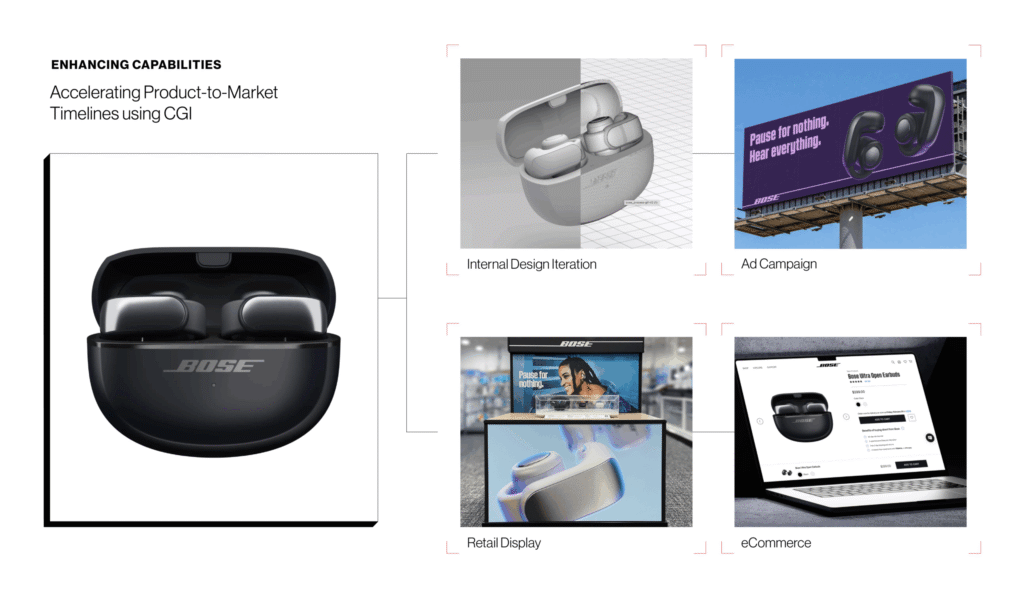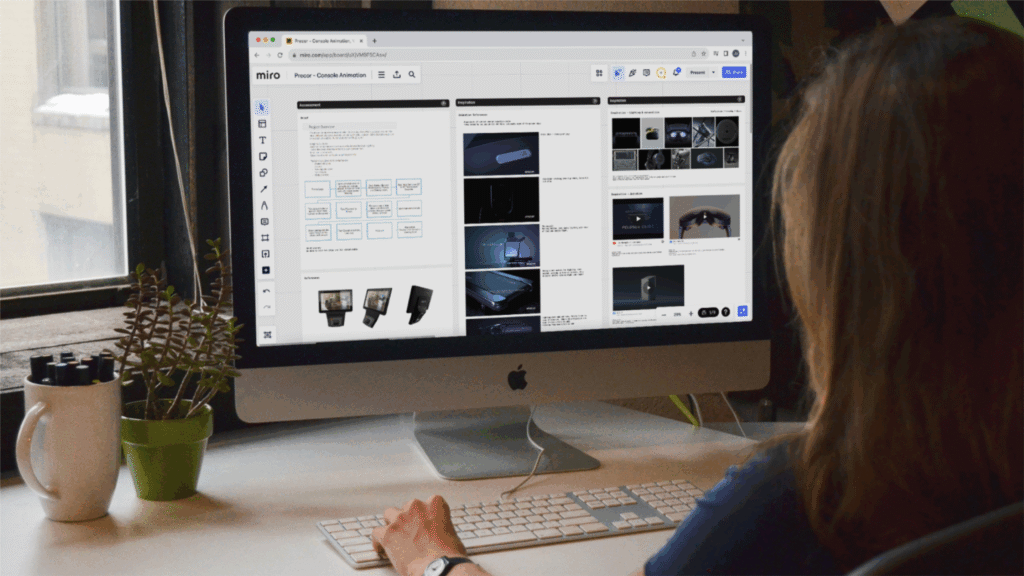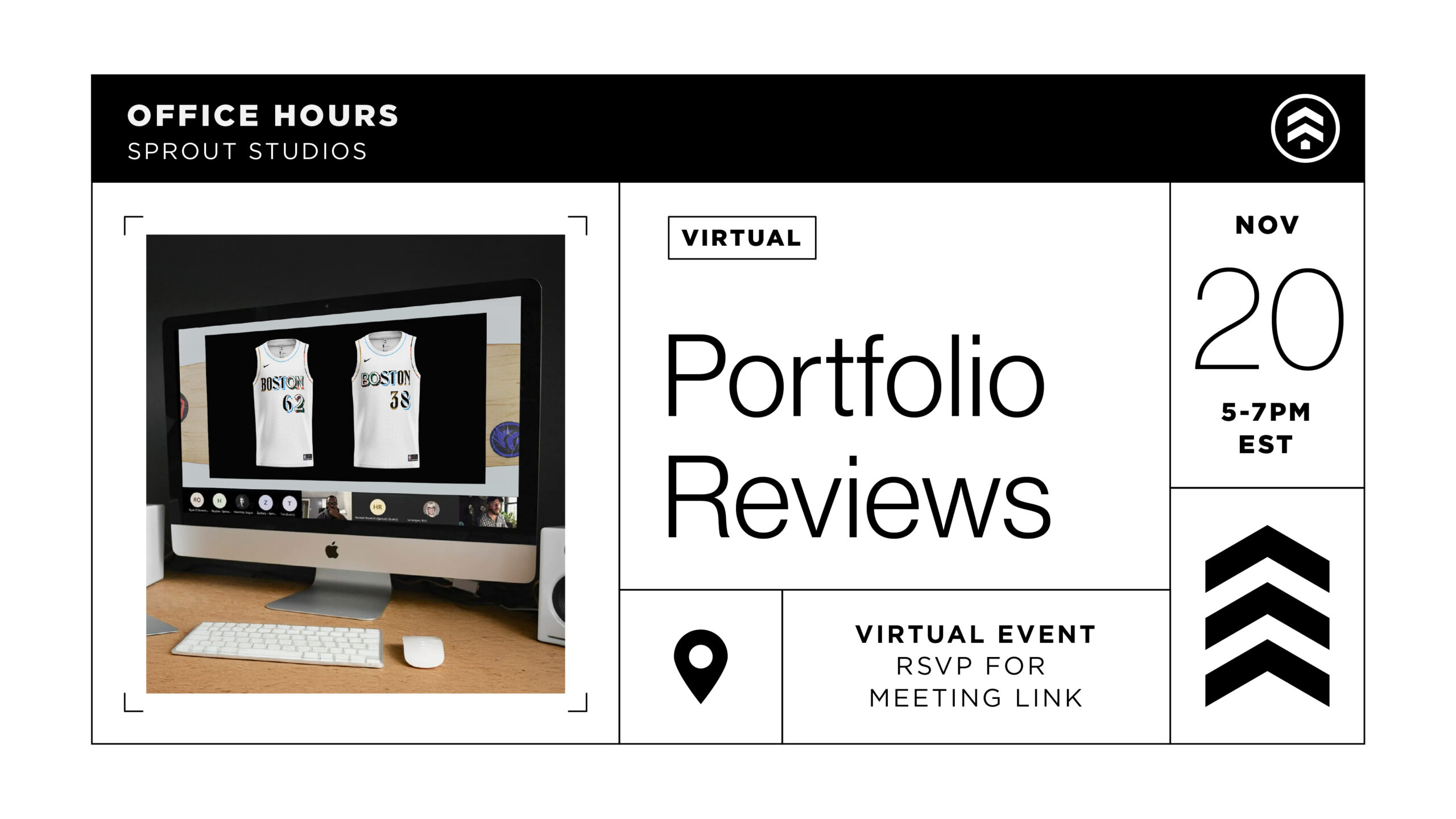In the late 1990s, the rhythm of a product design studio was set each day by the volume of research, sketching and project meetings on the calendar. There was an ongoing question of whether the Silicon Graphics machines were cranking and if the glacial pace of Alias renderings would meet deadlines. Designers labored late into the night, tweaking camera angles, adjusting light maps, and restarting scenes after a pixel-level misfire. Each rendering was a commitment, hours easily turned into days of processing, and the final image was a fragile manifestation of the future.
CGI (Computer-Generated Imagery) was a high-cost, low-yield tool, tucked at the very end of the development pipeline. It came in after the hard decisions had been made and was used to dress up presentations or approximate a prototype that might not even exist yet. Oftentimes it was a lower cost option to create an appearance model and photograph. For many projects it was an option that was considered, and often cut from budgets to save cost.
Fast forward to today, and the landscape has shifted dramatically. Designers now orchestrate CGI workflows across clusters of machines from a single console. Render cycles are measured in minutes. Visual fidelity is upscaling to meet demand. Most importantly, CGI is no longer a supporting act, it’s a lead character in how design happens.
This technical evolution has unlocked something more powerful than speed, when integrated into creative processes it provides strategic clarity. For companies launching new products, building brands, or reimagining customer experience, CGI has become a vital tool in aligning teams, compressing timelines, and ensuring creative cohesion from sketch to shelf.

CGI as a Client Growth Lever, Not Just a Studio Asset
While CGI has transformed internal operations, the greatest impact has been in regard to the outcomes it helps design teams and the larger organization achieve.
Traditionally, CGI was seen as a deliverable. A rendering handed off at the end of a design cycle for use in marketing or stakeholder presentations. But as we began integrating our CGI services earlier into projects, we started to see it differently. It became a tool to build consensus, prototype ideas, generate alignment between departments that historically worked in silos, gain approval, and ultimately millions of dollars to fund projects.
Today the CGI conversation often starts in isolation. A marketing team requests faster content development to reduce the cost and complexity of traditional photoshoots. Or a product development team needs visual assets to gain internal buy-in for a new concept. Rarely are organizations looking at this tool as a way to link early stage R&D to Marketing and Selling functions.
At first, these seem like tactical department-specific requests but when CGI is integrated early, it unlocks value far beyond the initial task. Take, for example, a recent engagement with a global aerospace manufacturer. The R&D team came to us with a request: could we help them visualize the interior of a new helicopter cockpit to gain leadership approval? We created a high-fidelity CGI environment that allowed stakeholders across design, engineering, and even finance to “sit” in the cockpit via VR. The product moved forward with confidence and alignment.
Because CGI was integrated early, that same asset suite transitioned seamlessly into product launch content. Marketing used it to build campaign visuals, create configurators, and produce interactive sales tools. All created without needing to wait for a physical prototype or photography shoot. What began as a tactical visualization became a pipeline of multi-use assets that accelerated the path to market.
This is where CGI transcends function. It doesn’t just serve marketing or R&D; it becomes a growth lever that drives speed, cohesion, and impact across the business.
From Visualization to Unification
For businesses managing complex product roadmaps or navigating cross-functional development processes, clarity can be elusive. Design has one interpretation, marketing another, and engineering yet another. We see this in early-stage startups and enterprise innovation teams alike. A beautifully executed render doesn’t just communicate an idea, it collapses ambiguity. It removes the need for constant explanation. It allows product teams to test form factors while brand teams evaluate storytelling and channel strategy.
Using CGI, teams can quickly test packaging formats for wearables across retail and DTC channels, simulate in-app product UI across different hardware configurations, and generate early social media visuals to support brand-building. What was once a set of isolated activities can become an integrated campaign. CGI gives every team from UX to marketing a shared visual truth that evolves in tandem with the product itself.

Accelerating Product-to-Market Timelines with CGI
Businesses today are looking for ways to achieve more aggressive launch targets. Prototyping, packaging, marketing content, e-commerce assets. It all needs to happen at once! Traditional workflows stagger these efforts, creating bottlenecks and late-stage fire drills. CGI changes the game by making everything visual before it’s physical.
As a product rendering studio, we’ve helped clients bring lines to life before prototypes exist—developing campaign visuals, e-commerce content, and packaging simulations through integrated CGI services.
The impact is speed and readiness. Campaigns are on-brand from day one. Retail partners commit early. And internal stakeholders are clear throughout the process, which reduces rework and increases confidence.
CGI Bridges the Gap Between Engineering and Marketing
One of the most overlooked benefits of client CGI integration is the way it connects technical and commercial teams. Engineering departments often have the first physical version of a product in CAD files, specs, and tolerances. Marketing, on the other hand, is tasked with storytelling, positioning, and emotional resonance. These two groups don’t always speak the same language.
CGI can serve as a translator because it draws from engineering models and presents them with brand-driven fidelity. CGI allows both sides to evaluate the same object from their unique perspectives. Marketers can assess visual appeal and communication potential. Engineers can validate whether the depiction aligns with physical constraints. This creates a natural, productive overlap in many cases, with design at the center. When imagery and messaging are vetted against real product details, the entire organization is better prepared to deliver a consistent customer experience.
Design Management in a CGI-First Ecosystem
Integrating CGI solutions requires a design management mindset shift. It requires structure and customized workflows, asset libraries, and collaborative review frameworks. It also requires education.
Many organizations are familiar with CGI but most are new to working with CGI at this level of integration. Practices core to design management are required, including how to brief against renderable outputs, how to provide feedback that leads to refinement rather than restart, and how to build internal pipelines that scale with product and brand growth.
My recommendation is to design the system that surrounds CGI, not just the imagery itself. This includes:
- Aligning product, brand, and channel goals around shared visual assets.
- Creating internal playbooks for asset management and versioning.
- Building modular workflows that allow content to evolve without full regeneration.
This is where design management theory becomes real. CGI acts as a nucleus around which process, people, and platforms converge.
How to Get Started: Building a CGI-Integrated Design Workflow
For organizations looking to adopt CGI as more than just a rendering tool, the key is to think systemically and not just about outputs, but about integration across people, processes, and platforms. Here are a few foundational steps I recommend to clients beginning this journey:
Start with One Strategic Use Case. Begin where the pain is real and the value is visible. That could be marketing needing faster content, or product teams needing a pre-visualization for internal buy-in. Use this as your proof point—not just for image quality, but for improved workflow and alignment.
Build a Shared Asset Library. Create a centralized repository for CGI assets that can be accessed and repurposed by design, marketing, engineering, and sales. This ensures consistency and avoids redundant work. Naming conventions and version control matter here.
Identify Cross-Functional Advocates. Bring together a small group from design, R&D, and marketing to co-own the CGI process. These advocates will help champion its value across functions, resolve early friction, and guide integration into existing workflows.
Invest in the Right Talent and Tools. In-house CGI specialists, external partners, or hybrid models all work. Choose platforms that scale with your needs and integrate well with your current design and engineering toolsets.
Treat CGI as a Process, Not a Deliverable. The most successful integrations treat CGI as an ongoing design and communication layer. Include it in sprint cycles, concept reviews, engineering meetings, and marketing plans. Make it part of how you work, not just what you produce.

Future-Readiness: CGI in the Age of AI
AI is transforming how creative teams operate by accelerating and enhancing capabilities. The most significant shifts are in the reduction of time-consuming tasks that previously offered limited creative value. This evolution enables teams to focus on higher-impact design decisions rather than repetitive production work.
Tasks like masking, lighting adjustments, background replacements, and resolution enhancement are now faster and more automated. Creative teams can customize stock imagery, upscale fidelity, and apply brand-specific visual language with far greater ease. These improvements streamline workflows and reduce bottlenecks in both early concepting and final asset delivery.
Organizations already fluent in CGI are best positioned to take full advantage of these AI-driven tools. They have the visual literacy and operational discipline to evaluate quality, maintain consistency, and guide output toward brand accuracy. They are skilled in refining and directing to meet established creative standards.
AI does not have to be a threat to creative excellence. It can be a tool that amplifies our ability to deliver high-quality work, faster and more effectively. To benefit from this integration we need to be quicker adopters, more informed users, and more agile operators in an increasingly competitive landscape.
From Image Creation to Innovation Platform
CGI is no longer a “nice-to-have” for design-forward organizations. It’s infrastructure.
CGI is not a decoration but a driver of design-led growth. It enables us to move faster, communicate clearer, and launch smarter. It unites disciplines, eliminates guesswork, and replaces static deliverables with evolving visual assets that scale. More importantly, it sets you up for the future. As tools advance and expectations rise, clients who invest in the systems, skills, and strategies around CGI will outpace those who treat it as an endcap.
In a world where product cycles are compressed and brand storytelling is continuous, clarity is the key to increasing speed. CGI is how you can get there.


